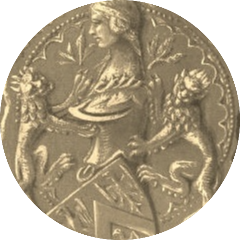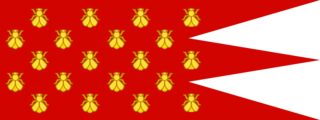


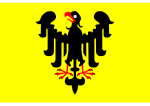
" THE SEIGNEUR OF FIEF THOMAS BLONDEL ET FIEF DE L'EPERONS "Est. 1179 Greetings from the Ancient Lords, Dames and Seigneurs of Private Fief Blondel Est. 1179 - "Le Seigneurs de la Fief Thomas Blondel & Fief de L'Eperons including the Fief Bouvée Duquemin in TortevalThe Fief of Thom. Blondel is One of the Last Great Private Fiefs of Normandy registered directly with the Crown's Royal Courts in Her Majesty's Crown DependenciesFiefdom In feudalism, a fiefdom (also called a fief, feud, feoff, or fee) was a property or right that an overlord, seigneur or Lehnsherr (sometimes granted directly from a King or Queen) gave a vassal in exchange for fealty or service. This property, of whatever size, could be inherited by the Lord's heirs.Some Fiefs are Free Fiefs registered directly from the Sovereign such as this ancient Norman Fief. The Lords of the Guernsey fiefs were originally all: " liberi homines " and " franc-tenans ", free men, or free tenants. In other parts of Scandanivia, Frankonia, Germania, the name is Free Lord, Free Tenant, or Feudal Lord.Friherre af Fief Blondel, Kanaløyer Est. 1179 - "R.Frhr." or "RFrhr."History of the Viking Norman Seigneur & Fiefdoms481–843 Kingdom of the Franks (Latin: Regnum Francorum), Frankish Kingdom, Frankland or Frankish Empire - Merovingian rise and decline, 481–687; Clovis's sons; Chlothar; Francia split into Neustria, Austrasia, and Burgundy; Rule of Chlothar II; Dagobert I; Dominance of the mayors of the palace, 687–751; Death of Pepin; Umayyad invasion; Carolingian empire, 751–840; Divided empire, after 840
843–987AD - Kingdom of the West Franks - The Channel Islands were held by Frankish Kings until Rollo the Viking conquered Normandy in 911AD 911AD - ROLLO the VIKING - The Norse Channel Islands of France's Normandy were conquered by the Vikings before 911AD. As a concession to the invaders, Fiefs of the Channel Islands begin with the Grants by King Charles the Simple. In 912, Charles the Simple, King of France, ceded to Rollo, the great Norwegian Viking Chieftain, the province of Neustria, now called Normandy, and Rollo became the first duke of that province. On his baptism and marriage with Gisele, daughter of Charles, he also received Brittany, for which Juhael Berengier, Earl of Rennes, did him homage. 911AD. The Great Viking Chief Rollo Göngu-Hrólfr or Gaange Rolf is first Seigneur of the Guernsey Islands. Chief Rollo was a Viking Warrior who became the first ruler of Normandy, a region of France. He is sometimes called the 1st Duke of Normandy and speculations point to Denmark as Rollo's birth place. Guernsey, second largest of the Channel Islands. It is 30 miles (48 km) west of Normandy, France, and roughly triangular in shape. With Alderney, Sark, Herm, Jethou, and associated islets, it forms the Bailiwick of Guernsey. The reigning Queen or King of England is still known as the "Duke of Normandy" to all those in the Channel Islands. This fief was held directly from the Crown which would imply that the title appying to the Fief Blondel during the Norman Age was Reichsfriherre. The common Dane/Germanic acronym for "Reichsfreiherr" is "R.Frhr." or "RFrhr." for short. 933AD the islands were granted to William I Longsword by Raoul, the King of West Francia, and annexed to the Duchy of Normandy West Francia Rule of Guernsey - Somewhere around A.D. 968, monks, from the Benedictine famous monastery of Mont Saint-Michel, came to Guernsey to establish a community in the North of the island called the: The Priory of Mont Saint-Michel which was a dependency of the famous Abbey of Mont Saint-Michel. Robert II, Duke of Normandy (the father of William the Conqueror) was journeying to England in 1032, to help Edward the Confessor. He was obliged to take shelter in Guernsey and gave land, now known as the Clos du Valle, to the monks on Guernsey. These exchanges and laws create an exact correlation between West Francia Territory and Guernsey Fiefs. The Priory had the largest feudal court of all the Seigneuries, consisting of a Seneschal, eleven Vavasseurs, a Greffier (registrar), six Bordiers, and a Batonnier (wand-bearer).
1020AD - The Fief de Blondel or Fiefdom of Thomas Blondel came about through the medieval fragmentation of Fief Au Canelly and consequently, of the initial half of Guernésiais or Guernsey given by Duke Richard II in 1020 to Neel, Vicomte of the Cotentin. Fief Blondel was part of Fief Canelly and Fief of the Cotentin of Torteval and Fief of Bessin ( or Bayeux ) which was in St. Pierre-du-Bois, and Blondel may have had territory in the Fief of Ansquetil.. Thus, Blondel is one of the only fiefs which has territory in all of the great fiefs The holders of the property title of the Fief Blondel territory were Counts or Viscounts of Contentin and Bessin. The definition of a vicomte is a French nobleperson, ranked just above a baron. This fief Blondel was held directly from the Crown which would imply that the title appying to the Fief Blondel during the Norman Age was Reichsfriherre. The common Dane/Germanic acronym for "Reichsfreiherr" is "R.Frhr." or "RFrhr." for short. In 1066, William the Conqueror mandated Norman Feudal Tenure into England and the Channel Islands and divided it up into 700+ baronies or fiefs. The Lord Barons were called Seigneurs Normands who were part of the new Kingdom of William the Conqueror.
In
12th Century Kingdom of France, the term baronnie or Baron was generally applied to all lords or seigneurs
possessing an important fief, but laterin the
13th century the title of Baron meant that the holder held his Fief
directly from the Crown and was thus more important than a count since counts were
typically vassals. Several Knightly Orders were created - Order of the Genet 726AD - Order of the Star 1022AD - Order of the Thistle of Bourbon 1370AD. These
three orders are still maintained by the Seigneur of Fief Blondel AD 1179 - We find Legal Reference of Lord Seigneur of Thomas Blondel, a noble fief, in a charter of 1179AD when he is witnessing a grant to St. Michael's Mount. He is Robert Malmarchie (Thomas Blondel). 1204 AD - Fief Blondel and other Ancient Fiefs were Forfeited to the Crown with separation of Guernsey from France and Normandy and given to loyal Seigneurs and Dames who were Feudal Lords to the Sovereign of the UK Crown. 1200's AD - The Parish of St. Andrew in which Thomas Blondel lies contained a group of four late 12 century ecclesiastical Fiefs, one held by the Bishop of Countances, the second held by the Abbot of Cormery, Tours, the third held by the Abbot of La Croix St. Lewfroy, Evreux, and the fourth held by the Abbess of Trinity, Caen. The Fief Thomas Blondel derives its name, as we have already observed from the family of Malmarcher or Malmarchy who are recorded in the charters as existing in Guernsey in the 12th Century. Today, The region of The Fief de Thomas Blondel lies in both St Pierre du Bois (St. Peter of the Wood) and of the Parish of Notre Dame de Torteval along with the Blondel Dependency Fief de l'Eperon of Torteval Parish of the Island of Guernsey. In 1270, on the death of Sir Henry Le Canelly, the great Guernsey fief Fief Au Canelly was divided between his daughters. Guilemette, the wife of Henry de Saint Martin obtained a considerable part of the island originating the Fiefs of Janin Besnard, Jean du Gaillard, Guillot Justice and Thomas Blondel. This was confirmed by the tenants and officers of the Fief in letters patent issued by Guernsey's Royal Court under the Bailiwick Seal in 1463. The original noble, Thomas Blondel was a jurat of Guernsey’s Royal Court from 1421-45. The Blondel family has given several jurats to the island. Later the Columbines and Fiotts were the holders of the title. For a time, the rights over the Fief were divided in two. In 12th Century Kingdom of France, the term baronnie or Baron was generally applied to all lords or seigneurs possessing an important fief, but later in the 13th century the title of Baron meant that the holder held his Fief directly from the Crown and was thus more important than a count since counts were typically vassals.
A 1440 Record of the Fiefdom Deed of the Fief of Thomas Blondel which the deed is still at University Leeds, shows the parishes of St Peter of the Wood and Torteval, Guernsey, made by Janet Blondel to Thomas de la Court. attested by Jean Bonamy and Jacques Guille, jurats. According to the Deed, the Fief Blondel further includes the: Fief Blondel territory in the parishes of St Pierre du Bois (St. Peter of the Wood) and of Notre Dame de Torteval along with the Fief de l'Eperon of Torteval, the Bouvée Phlipot Pain, lying in the said parish of St Pierre duBois, and the Bouvée Torquetil and Bouvée Bourgeon lying in the said parish of Torteval. SEE DIGITAL FIEF MAP 1848 - French Nobility and Titles are eliminated while the Fief Seigneurs of Guernsey continue to exist under Ancient British Norman Laws. 1919 - Nobility eliminated in Germany and Austria. Since 1919 nobility is no longer legally recognized in Germany. Under the Law on the Abolition of Nobility, Austria eliminated its noble classes in 1919. However in Guernsey, the ancient property titles of Fief Seigneur or Free Lord of a Fief continued to exist. A few of these Guernsey fiefs are still registered directly with the Crown where a treizième or conge was paid in Royal Court to Her Majesty. A lawyer must be hired to register the fief in French. Conge is part of the feudal past when a due (representing one thirteenth of the property price) was charged on the property changing hands and was paid to the Seigneur of the fief upon which the property sat. It remains due and payable to the Receiver General in respect of the conveyance of fiefs. The owners of Fiefs maintain the legal right to be styled with the ancient title of: Seigneur or Dame. In the case of the Fief Blondel, the fee was paid by the Seigneur of Fief Blondel directly to the Crown of the United Kingdom. There may be only a few legally recognized feudal fiefs in the world left at this time which are legally allowed or directly registered with a Sovereign King or Queen. The Noble Fief of Blondel is one of the island's few "private fiefs" or" feudal titles" not held by the King and Queen. The Feudal Lord's of Blondel - Approx. Chronology of FreeLords who Held the Norman Title.
2017 to Present Day - The Goverment's Court of Chief Pleas is an ancient Court and is constituted in the same way as a Full Court. Nowadays it will typically sit only once per year. It is attended by the Full Court, the Law Officers of the Crown, Advocates and the Fief Seigneurs and Bordiers owing suit to the Court. The Feudal Lords of the Fief are recognized directly by registration with the crown and royal courts. Many esteemed lawyers and officers are in attendance each year at Michaelmas which is a Christian festival observed in some Western liturgical calendars on 29 September. In some denominations a reference to a fourth angel, usually Uriel, is also added. Michaelmas has been one of the four quarter days of the financial, judicial, and academic year. Michaelmas annual Court in Guernsey is usually on the first Monday of October accompained by government meetings, roll calls, traditional march parade, and dinner of legal, governmental, and feudal dignitaries. Commissioner Dr. Mentz, Seigneur of Fief Blondel attending Chief Pleas
Fief Blondel Territory - Free Lords and Counts Ancient Feudal Court of Fief Blondel The Chief Pleas of the Seignorial court of Seigneurial court of Fief Thomas Blondel were originally held annually at the mounting block or steps (perron) of the Church of St. Pierre-du-Bois. Now the Cheif Pleas Annual Court is held at the Old Government House and is led by the Government of Guernsey where all of the Seigneurs and Bordiers attend and make procession in the streets of Guernsey as they have done for over hundreds of years.
The Fief Blondel is a private fief dating back to 1179 in the Crown Holding Island of Guernsey where the owners of a fief directly from the Crown are called a Seigneur according to present law. Where is Fief Blondel Fief Blondel – is a feudal area of land for which residents once paid fees or rendered services to the Lord Baron or Seigneur in return for the right to use the land in commerce. The Free Fief Blondel is in two parishes or counties of Torteval and St. Peter of the Wood. The Fief sits on the Eastern part of the island and includes areas in the North, Central and South East Sections of the Island including: beach, woods, buildings, common areas, sacred lands, and other commercial buildings and farm land along with potentially including small islands offshore of the fiefs beach and foreshore. The Fief Blondel has foreshore in Roquaine Bay and Portelet Beach where " The Bissets " Rock Islands are considered part of the Fief Thomas Blondel. Historically, fiefs and small baronnies of land, were granted as a form of over-lordship, giving the Free-Lord or Seigneurs the rights over the people and property on that land under the ancient Northman/Norman feudal system.
Style of Seigneur - As per the
The Feudal Dues (Guernsey) Law, 1980 Style of Seigneur of a fief etc. Section 4. The foregoing provisions of this
Law shall be without prejudice – (a) to the right of any person to use, in the case of a male person, the style of
Seigneur and, in the case of a female person, the style of Dame, of a fief, (b) to the feudal relationship between
Her Majesty and any person holding an interest in a private fief on or at any time after the commencement of this
Law, or to the feudal relationship between any person holding an interest in any fief and any person holding an
interest in a dependency of that fief, and (c) to the right or obligation of any person by virtue of that person
holding an interest in any fief which is not a right to which those provisions apply or any obligation correlative
thereto. Some of the legal taxation rights formerly enjoyed by the Seigneurs of fiefs having been abolished by law in 1966 but international law and custom still pertains to the rights of nobility, titles, intellectual property, beaches, airwaves, underground, common areas, foreshore, and other rights such as hunting and fishing. A fief owner does register the title in an act of legal title conveyance with Her Majesty's Receiver General much like the transfer of land rights, mineral rights or water rights and the fief buyer pays special consideration of Treizième & Congé fees to the CROWN for the transfer and rights. The Fief holder can be styled Seigneur (or Dame) du Fief de la ..... Generally speaking, the title is not normally used except in formal settings. A fief, in legal theory, is held directly from the Crown. However, this fief does not owe homage or any other services but does maintain rights to conduct customs and formalities such as creating honorific Fief Officers and Courts or possibly representing the Fief in any unclaimed area of law such as foreshore, airwaves, water rights, hunting and fishing rights etc. The International Court of Justice Addresses many issues of Normandy, The English Crown, and ownership of the Channel Island Fiefs in various cases.
During the Dane and Viking expansion of 800-1100, Guernsey is even mentioned in the
Edda. Guernsey was subject to Brittany until 933 when they were added to the Duchy of Normandy. Many of the
Fiefs were owned by Norman Seigneurs and thus the fiefs of Guernsey are Norman titles. King Philip declared the
islands forfeited in 1204 to England and King John. In 1568 after being Catholic for hundreds of years,
Guernsey was attached to the diocese of Winchester England. The Bailiwick of Guernsey dats from about 1290 where
there is a Lieutenant Governor and bailiff and royal court presiding for the Crown. Guernsey is not bound by
parliament unless specifically named.
English……... Free Lord or Baron of Feudal Baron
German……. Frhr. Freiherr Freifrau
Description of the Lords of The European Fief of Blondel and Eperons - Est. 1179 Commissioner George Mentz is the Seigneur of the Fief Blondel & Eperons of Normandy which is an 800 year old territory on the Norman Islands. From the great Viking Rollo to the present day of the rule of King Charles, these islands have allowed feudal law and courts on the fiefs and island shores. The Fief Blondel and Eperons and its Seigneur are registered directly with the Royal Courts of the Crown and The Duke of Normandy and King Charles. Much like the Seigneurs of Monaco, the lords of French Andorra, Sovereign Gozo of Malta, the Sovereign Military Order of Malta (SMOM), The Papal Monarch of the Vatican City, and The Lord of Sark, The ancient Fiefs in the Channel islands are recognized by both nobility law and international law. Commissioner Dr. George Mentz was elevated as the 26th Free Lord & Seigneur of Fief of Blondel et L'Epersons) on the island of (Dgèrnésiais - Guernsey French) in Dec. 2017. Mentz also registered the fief direct with the courts using the feudal legal system of Conge and Tresieme which is the official way to transfer a fief from one noble leader or peer to another owner. The Fief of Thom. Blondel is One of the Last Great Private Fiefs in Europe to be privately owned where the lord owns the Beaches, Water, Foreshores and Seasteds including international Waters. In other local cultures, the free-lord Seigneur is known as a Frhr. Friherre in Sweden, a Frhr. Vrijheer in Dutch, and a Frhr. Friherre in Denmark. The Lords of Fief Blondel et Eperons appear to be older than the Seigneurs of Monaco as the Grimaldi family settled in Monaco in 1297 and Fief Blondel is also older than ancient Sheikhdom of Kuwait, Kingdom of Moscovy Russia 1362, Kingdom of Spain 1479, Kingdom of Bohemia, Kingdom of Belgium. Fief Blondel may also be older than the Ottoman Empire, Habsburg Empire, and the Kingdom of Lithuania. French: Le commissaire George Mentz est le seigneur du fief Blondel & Eperons de Normandie, un territoire vieux de 800 ans situé sur les îles normandes. Du grand Viking Rollo jusqu'à l'époque actuelle du règne du roi Charles, ces îles ont permis l'application du droit féodal et des tribunaux sur les fiefs et les côtes des îles. Le fief Blondel et Eperons ainsi que son seigneur sont enregistrés directement auprès des Cours Royales de la Couronne, du Duc de Normandie et du Roi Charles. Tout comme les seigneurs de Monaco, les seigneurs de la France, Andorre, le Souverain Gozo de Malte, l'Ordre Souverain Militaire de Malte (SMOM), le Monarque Papal de la Cité du Vatican et le Seigneur de Sark, les anciens fiefs des îles de la Manche sont reconnus à la fois par le droit de la noblesse et par le droit international. Le commissaire George Mentz a été élevé au rang de 26ème Seigneur Libre et Seigneur du fief de Blondel et L'Epersons) sur l'île de (Dgèrnésiais - français de Guernesey) en décembre 2017. Mentz a également enregistré le fief directement auprès des tribunaux en utilisant le système juridique féodal de Conge et Tresieme, qui est la manière officielle de transférer un fief d'un noble leader ou pair à un autre propriétaire. Le fief de Thom. Blondel est l'un des derniers grands fiefs privés en Europe à être la propriété privée où le seigneur possède les plages, l'eau, les rivages et les estrades maritimes, y compris les eaux internationales. Dans d'autres cultures locales, le seigneur libre Seigneur est connu sous le nom de Frhr. Friherre en Suède, un Frhr. Vrijheer en néerlandais, et un Frhr. Friherre au Danemark. Les seigneurs du fief Blondel et Eperons semblent être plus anciens que les seigneurs de Monaco car la famille Grimaldi s'est installée à Monaco en 1297 et le fief Blondel est également plus ancien que l'ancien émirat du Koweït, le royaume de Moscovy Russie 1362, le royaume d'Espagne 1479, le royaume de Bohème, le royaume de Belgique. Le fief Blondel pourrait également être plus ancien que l'Empire ottoman, l'Empire des Habsbourg et le royaume de Lituanie. German: Kommissar George Mentz ist der Seigneur des Fiefs Blondel & Eperons der Normandie, das ein 800 Jahre altes Territorium auf den Normanneninseln ist. Von dem großen Wikinger Rollo bis zur heutigen Zeit unter der Herrschaft von König Charles haben diese Inseln feudales Recht und Gerichte auf den Lehen und Inselküsten ermöglicht. Das Fief Blondel und Eperons sowie sein Seigneur sind direkt bei den Königlichen Gerichten der Krone, dem Herzog der Normandie und König Charles registriert. Ganz ähnlich wie die Seigneurs von Monaco, die Herren von Frankreich, Andorra, dem Souveränen Gozo von Malta, dem Souveränen Militärorden von Malta (SMOM), dem päpstlichen Monarchen des Vatikanstaats und dem Herrn von Sark werden die alten Lehen auf den Kanalinseln sowohl vom Adelsrecht als auch vom Völkerrecht anerkannt. Kommissar Dr. George Mentz wurde im Dezember 2017 zum 26. Freien Herrn & Seigneur des Fiefs von Blondel et L'Epersons) auf der Insel (Dgèrnésiais - Guernsey French) erhoben. Mentz registrierte das Lehen auch direkt bei den Gerichten unter Verwendung des feudalen Rechtssystems von Conge und Tresieme, das die offizielle Art und Weise ist, ein Lehen von einem adligen Führer oder Peer auf einen anderen Eigentümer zu übertragen. Das Fief von Thom. Blondel ist eines der letzten großen privaten Lehens in Europa, das privat besessen ist, wo der Herr die Strände, das Wasser, die Küsten und die Meeresstädte einschließlich der internationalen Gewässer besitzt. In anderen lokalen Kulturen ist der freie Herr Seigneur als Frhr. Friherre in Schweden, ein Frhr. Vrijheer im Niederländischen und ein Frhr. Friherre in Dänemark bekannt. Die Herren des Fiefs Blondel et Eperons scheinen älter zu sein als die Seigneurs von Monaco, da sich die Familie Grimaldi 1297 in Monaco niederließ und das Fief Blondel auch älter ist als das alte Scheichtum Kuwait, das Königreich Moscovy Russland 1362, das Königreich Spanien 1479, das Königreich Böhmen, das Königreich Belgien. Das Fief Blondel könnte auch älter sein als das Osmanische Reich, das Habsburgerreich und das Königreich Litauen. Italian: Il commissario George Mentz è il signore del Feudo Blondel & Eperons della Normandia, un territorio di 800 anni situato nelle isole normanne. Dal grande vichingo Rollo ai giorni nostri sotto il regno di Re Carlo, queste isole hanno permesso l'applicazione della legge feudale e dei tribunali sui feudi e sulle coste delle isole. Il Feudo Blondel ed Eperons e il suo signore sono registrati direttamente presso i Tribunali Reali della Corona, il Duca di Normandia e Re Carlo. Molto simili ai signori di Monaco, i signori della Francia, Andorra, il Sovrano Gozo di Malta, il Sovrano Militare Ordine di Malta (SMOM), il Monarca Papale della Città del Vaticano e il Signore di Sark, gli antichi Feudi delle isole del Canale sono riconosciuti sia dalla legge nobiliare che dal diritto internazionale. Il commissario Dr. George Mentz è stato elevato al rango di 26° Signore Libero & Signore del Feudo di Blondel et L'Epersons) nell'isola di (Dgèrnésiais - Guernsey French) nel dicembre 2017. Mentz ha anche registrato il feudo direttamente presso i tribunali utilizzando il sistema giuridico feudale di Conge e Tresieme, che è il modo ufficiale per trasferire un feudo da un nobile leader o pari a un altro proprietario. Il Feudo di Thom. Blondel è uno degli ultimi grandi feudi privati in Europa a essere di proprietà privata, dove il signore possiede le spiagge, l'acqua, le rive e le città marittime, comprese le acque internazionali. In altre culture locali, il Signore libero Seigneur è conosciuto come Frhr. Friherre in Svezia, un Frhr. Vrijheer in olandese e un Frhr. Friherre in Danimarca. I Signori del Feudo Blondel et Eperons sembrano essere più antichi dei Signori di Monaco, poiché la famiglia Grimaldi si stabilì a Monaco nel 1297 e il Feudo Blondel è anche più antico dell'antico sceicco del Kuwait, del Regno di Moscovia Russia 1362, del Regno di Spagna 1479, del Regno di Boemia, del Regno del Belgio. Il Feudo Blondel potrebbe anche essere più antico dell'Impero Ottomano, dell'Impero degli Asburgo e del Regno di Lituania. Spanish: El comisionado George Mentz es el Señor del Feudo Blondel & Eperons de Normandía, un territorio de 800 años en las Islas Normandas. Desde el gran vikingo Rollo hasta la actualidad bajo el reinado del Rey Carlos, estas islas han permitido la aplicación de la ley feudal y los tribunales en los feudos y las costas de las islas. El Feudo Blondel y Eperons y su Señor están registrados directamente en los Tribunales Reales de la Corona, el Duque de Normandía y el Rey Carlos. Al igual que los Señores de Mónaco, los señores de Francia, Andorra, el Soberano Gozo de Malta, la Orden Militar Soberana de Malta (SMOM), el Monarca Papal de la Ciudad del Vaticano y el Señor de Sark, los antiguos Feudos de las Islas del Canal son reconocidos tanto por la ley nobiliaria como por el derecho internacional. El comisionado Dr. George Mentz fue elevado al rango de 26º Señor Libre y Señor del Feudo de Blondel et L'Epersons) en la isla de (Dgèrnésiais - Guernsey French) en diciembre de 2017. Mentz también registró el feudo directamente en los tribunales utilizando el sistema legal feudal de Conge y Tresieme, que es la forma oficial de transferir un feudo de un líder noble o par a otro propietario. El Feudo de Thom. Blondel es uno de los últimos grandes feudos privados en Europa en ser de propiedad privada, donde el señor posee las playas, el agua, las costas y las ciudades marítimas, incluidas las aguas internacionales. En otras culturas locales, el Señor libre Señor se conoce como Frhr. Friherre en Suecia, un Frhr. Vrijheer en holandés y un Frhr. Friherre en Dinamarca. Los Señores del Feudo Blondel et Eperons parecen ser más antiguos que los Señores de Mónaco, ya que la familia Grimaldi se estableció en Mónaco en 1297 y el Feudo Blondel también es más antiguo que el antiguo jeque del Kuwait, el Reino de Moscovia Rusia 1362, el Reino de España 1479, el Reino de Bohemia, el Reino de Bélgica. El Feudo Blondel también podría ser más antiguo que el Imperio Otomano, el Imperio de los Habsburgo y el Reino de Lituania.
One of the Oldest Noble Grants and Territories in Continuous Existence with Continous Crown Recognition - Since 1179 Fief Blondel appears to be older than the Seigneurs of Monaco as the Grimaldi family settled in Monaco in 1297 and Fief Blondel is also older than ancient Sheikhdom of Kuwait, Kingdom of Moscovy Russia 1362, Kingdom of Spain 1479, Kingdom of Bohemia, Kingdom of Belgium. Fief Blondel may also be older than the Ottomon Empire, Habsburg Empire, and the Kingdom of Lithuania.
The Fief de Thomas Blondel produced “ Livres de perchage ” in 1595, 1644, 1680, 1709, 1775, 1809, 1844, 1876, 1901, 1921 and 1968. The contents of the “ Livres de perchage ” reveal something of the history of the properties of the Territory and Fief boundaries.
** The fiefs of Thomas Blondel, Guillot Justice, Bouvee Duquemin adn Cour Ricard total about 238/9 vergees in Torteval and St. Peter in the Wood. They are parts of the ancient Fief au Canelly. In 1890 the Seigneur of Fief Blondel was Pierre Robilliard (Pleinmont). His Brother T Robilliard (Pleinmont) held the Torteval Fiefs Duquemin, Fief Guillot Justice and Fief Cour Riqua or Ricar. In the Livre de Percharge of Fief Thomas Blondel year 1968, Bouvee Duquemin is included as part of Thomas Blondel again. Order of the Genet -Order of the Start Est. 1022-Knights of the Thistle of Bourbon
Lord Kinnear, in Smith v. Lerwick Harbour Trustees said about the Crown's property rights: "If the solum of Shetland as a whole is not originally the property of the Crown, I know of no authority, and can see no reason, for holding (saying) that part of it which is called the foreshore is Crown Property". This statement could equally well be applied to the seabed, especially since the foreshore is regarded as part of the seabed in English law. KINGDOM OF WEST FRANCIA |
Kingdom of West Francia > Kingdom West Francia King Franks Seigneur de la Fief of Blondel Lord Baron Mentz of Fief Blondel Geurnsey Crown Dependency Seigneur Fief of Blondel George Mentz Lord Baron of Fiefdom Blondel Freiherr Lord of Baronnie - Noble Fief Barony Friherre Kingdom of West Francia Lord Paramount Feudal Barons The Seigneur Charter of Liberties Viking Kingdom Extended Continental Shelf Fief Worship Fiefs of the Islands Fief de l'Eperon Order of the Iron Crown Blondel Privy Seal Fief DuQuemin Bouvée Phlipot Pain Bouvée Torquetil Bouvée Bourgeon Channel Island History Feif Court Styles and Dignities Fief Blondel Islands Court of Chief Pleas Seigneurs and Dames Travel Research Order of the Genet Order of the Genet Order of the Star Est. 1022 Order of the White Falcon Territorial Waters Order of Celestines Knights of theThistle of Bourbon A Funny Think Happened On the Way to the Fief Arms Motto Flower Chancellor Hereditements Guernsey Bailiwick of Guernsey - Crown Dependency Papal Bull Norse Normandy Fief Rights Blondel and King Richard Press Carnival Store Portelet Beach Roquaine Bay Neustrasia Columbier Dovecote Fief Blondel Merchandise Fief Blondel Beaches Islands Foreshore Events Fiefs For Sale Sold Fief Coin Viscounts de Contentin Fief Blondel Map Feudal Guernsey Titles The Feudal System Flag & Arms Fief Videos Guernsey Castle Advowson Site Map Disclaimer Livres de perchage Lord Baron Longford Dictionary
Feudal Lord of the Fief Blondel of the Nordic Channel Islands Guernsey Est.
1179
Feudalherr - Fief Blondel von der Nordischen Insel Guernsey Est. 1179
New York Gazette - Magazine of Wall Street -
George Mentz -
George Mentz - Aspen Commission
Counselor George Mentz Esq. - Seigneur Feif BlondelBaron Annaly Baron Moyashel Grants to Delvin About Longford Styles and Dignities The Seigneur Court Barons Fiefs of the Islands Longford Map The Island Lords Market & Fair Fief Worship Channel Island History Fief Blondel Lord Baron Longford Fief Rights Fief Blondel Merchandise Events Blondel and King Richard Fief Coin Feudal Guernsey Titles The Feudal System Flag & Arms Castle Site Map Disclaimer Blondel Myth DictionaryKingdom West Francia Kingdom of the FranksMentz Scholarship Program 101 Million Donation - Order of the Genet Knighthood |
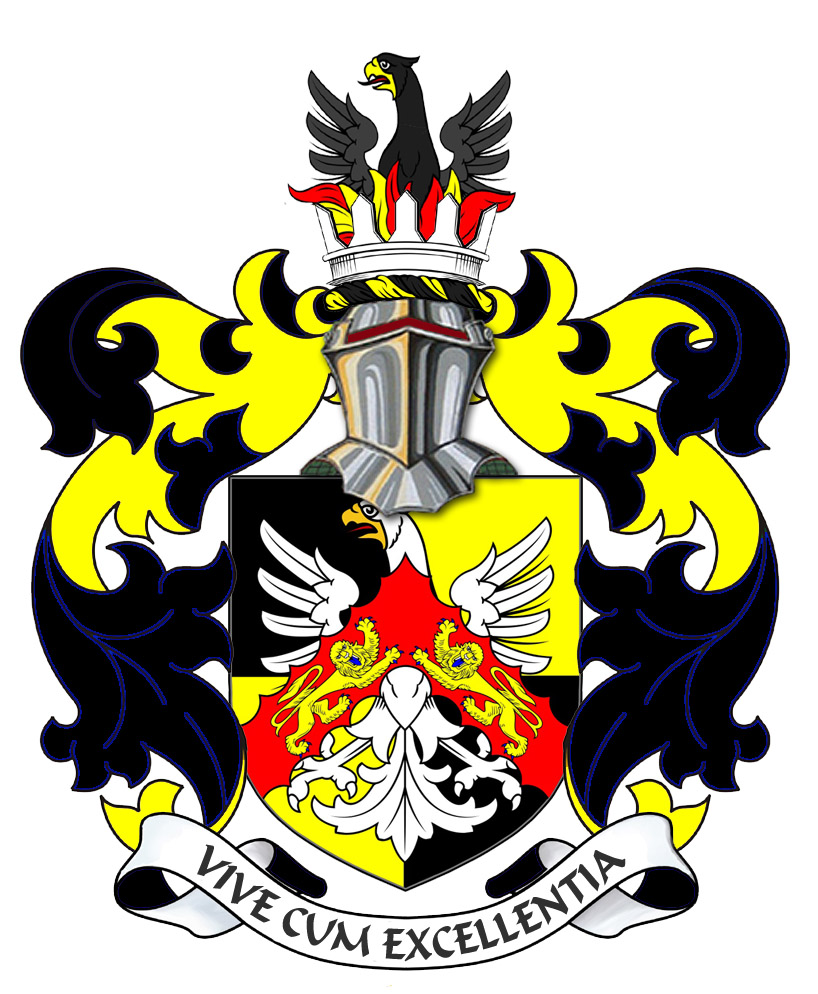


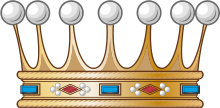
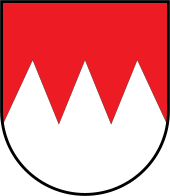

 Common, Civil and French/Latin Law who has a keen interest in maintaining the
Feudal Courts of the Fief Blondel because it is one of the oldest feudal courts in the
world.
Common, Civil and French/Latin Law who has a keen interest in maintaining the
Feudal Courts of the Fief Blondel because it is one of the oldest feudal courts in the
world.